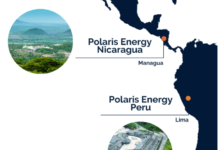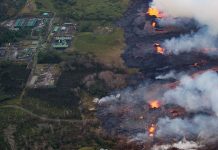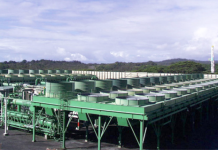By Jane Pater Salmon, Navigant Consulting
Geothermal energy presents baseload clean energy at a lower cost than many other renewable energy alternatives. Despite this compelling value proposition, long development horizons and the risks associated with exploration and drilling activities present hurdles to developing the country’s rich geothermal potential. Financing projects that use conventional geothermal technology remains challenging in the uncertain economic environment.
In the past year, geothermal project developers used alternative strategies to overcome three common challenges to geothermal project finance. While the challenges for raising capital at the project level are consistent with those faced in previous years, they have become even more pronounced as investors’ risk-tolerance remains low and capital constraints continue.
Three key challenges to raising capital for geothermal project investment have adversely affected developers in the past year.
- Concerns about creditworthiness of smaller firms. The geothermal industry is a fragmented one, with many smaller companies holding portfolios of just a few projects. With fewer assets against which to secure loans, these smaller firms pose a more significant risk than firms with more diversified portfolios. Even though many of these companies are traded on public exchanges, their capitalization levels are relatively low compared to larger renewable energy technologies companies like Vestas (VWDRY.PK), First Solar (FSLR), and Iberdrola (IBDRY.PK).
- Challenges securing debt with recourse to a single project. When conditions permit, developers prefer to secure project-level debt with no recourse to the company in the event of default. This “non-recourse debt” reduces the developer’s risk in the event of default because the company’s other assets are protected. Non-recourse debt, however, increases risk for lenders who generally have been unwilling to provide this type of loan in the past year. Lenders have sought more collateral to reduce the risk of loss.
- Higher transaction costs at the project level. Geothermal projects that have reached at least the permitting stage in the U.S. are smaller in terms of capacity as compared to other renewable energy projects. With few exceptions, geothermal projects are in the range of 25 to 50 MW, while wind projects are typically at least 100 MW. Similar levels of due diligence and negotiation are required for investments at this scale, resulting in relatively higher transaction costs for geothermal projects.
As a result, companies developing geothermal projects in the United States have deployed a diverse set of strategies fitting each company’s unique circumstance and leveraging the available resources to address these challenges.
Overcoming Concerns about the Creditworthiness of Smaller Firms
Well-known but smaller-cap geothermal firms have partnered with larger, more well-established firms. These partnerships provide smaller firms with the capital needed to move forward on their projects and in some cases, the credibility needed to secure financing. At the same time, larger firms benefit from the financial returns on the project and the strategic benefits of partnership.
Over the past year, both Nevada Geothermal Power and U.S. Geothermal deployed this strategy. Nevada Geothermal Power’s (NGLPF.OB) 30-MW Crump Geyser project in Oregon is a joint venture with geothermal industry giant Ormat (ORA). With a vertically integrated business model and a long history of strong financial performance, Ormat was seen as an ideal partner for the growing Nevada Geothermal Power. By providing the cash needed to complete the project, Ormat gained access to a lower-risk return on a project that was further into the development cycle than others in its own portfolio. The partnership also provided both companies with the potential to consider future collaboration.
U.S. Geothermal (HTM)partnered with Enbridge to raise equity for its 23-MW Neal Hot Springs project in Oregon. This partnership brought Enbridge, a Canadian gas transportation and distribution company, its first geothermal investment. The partnership leveraged Enbridge’s familiarity with the early-stage risk profile of geothermal development, which is closely related to that of oil and gas resources. It also provided Enbridge with the opportunity to experiment with investments in the renewable energy space at a much lower risk.
The creditworthiness of the Neal Hot Springs project was further strengthened by a U.S. Department of Energy Loan Guarantee, which backed a $97 million loan provided by the Federal Financing Bank. The loan represented the balance of capital needed to complete construction on the project. With the loan and the combined equity of U.S. Geothermal and Enbridge, the debt-to-equity ratio on the project was 75 to 25.
Addressing Challenges to Securing Debt with Recourse to a Single Project
Over the past year, geothermal developers have bundled combinations of their assets in order to leverage their equity investments with debt. In many cases, these assets are limited to a portion of those owned by the company but are broader than those assets tied to a specific project. This approach limits the amount of leverage developers have because the debt typically appears on the company’s balance sheet. In exchange, however, developers have secured the capital needed to continue to develop the resources to which they have rights.
Gradient Resources (formerly Vulcan Power) and Ram Power (RPG.TO) have each used corporate assets as collateral to secure credit in order to continue development. Gradient Resources secured a $13 million loan from GB Merchant Partners, LLC, with the firm’s geothermal drilling and cementing equipment. The proceeds from the loan enabled Gradient Resources to continue development of three projects in Nevada. This limited-recourse loan only put select assets at stake, but was unique in that the capital was not tied directly to the projects it will support.
In March 2011, Ram Power closed on a two-year $50 million credit facility providing additional working capital to support its portfolio of projects under development. The credit facility was secured by “unspecified assets” of the company but is not tied to a single project. In addition, the lenders retained rights to exercise warrants based on Ram Power’s reliance on the credit facility. The warrants provide the opportunity for the lender to earn additional returns on its investment if it elects to exercise them.
Reducing Transaction Costs Associated with Project Finance
Bundling projects to reduce transaction costs benefits both the lender and the borrower. The lender benefits from access to a portfolio of assets used to secure the loan. The borrower benefits from lower costs of capital, in t
erms of both fees to lenders and any arranger as well as in terms of staff time committed to closing the deal.
Both Ormat and John Hancock Life Insurance Company took advantage of these benefits in an application to the U.S. Department of Energy (DOE) for a Federal Loan Guarantee. Ormat bundled three projects McGinness Hills, Jersey Valley and Tuscarora that total 121 MW, achieving a scale similar to those achieved by wind projects. Meanwhile, bundling diversified John Hancock’s resource risk and development risk for projects in multiple stages of development. In June 2011, DOE conditionally awarded the bundle a partial guarantee of up to a $350 million loan.
Jane Pater Salmon is an Associate Director with Navigant. Her work focuses on strategic planning, market assessment, the intersection of business and policy, and the diffusion of innovation. Her recent geothermal projects include the development of a project finance guidebook for conventional geothermal projects and the analysis of business models for coproduced and geopressured resources. Ms. Salmon earned a BA in Government from the University of Notre Dame and graduate degrees in energy and business from the University of Colorado.








Ram Power has at least temporarily reversed its slide, anyone considering buying more shares?
Very interesting interview with Alterra Power CEO here: http://tinyurl.com/3czjkk3
Mr. Konrad, you liked Alterra in June. I’m guessing you like it even more now that the price has dropped further.
I’m holding on to both Ram and Alterra, but I’m seeing lots of other values in the market, so I’m not increasing my positions. Of the two, Ram is riskier: they must execute well in Nicaragua or they’ll be heading the way of Nevada Geothermal. Alterra’s more diversified and better capitalized.